New visitor in the South bed this morning!
On-the-go Gardening
The Plaster Creek Stewards had a native plant sale this afternoon hosted at the public library. According to their site, the group “is a collaboration of Calvin College faculty, staff, and students working with local schools, churches, and community partners to restore the health and beauty of the watershed.” The group focuses their efforts on “three areas: education, research, and on-the-ground restoration in the watershed.”
The plant sale was one of the many activities held in the city to celebrate Earth Week 2014. On the 15th of this month, I had attended a seminar at the Frederick Meijer Gardens about native plants. Native Plants in the Garden was given by Brian Majka of Cardno JFNew. So when I attended the native plant sale, I had a list of plants to seek out for specific, challenging areas of the Lot.
Along the east side of the Lot, against the foundation, is an area of dry shade. It has unfortunately been the site of many plant deaths. At first I felt sedum would work, but there is not enough sun. None of the gentle, morning sun the rest of the east side receives reaches the barren patch.
Here are the natives I brought home for dry / sandy / shade:
In the back, northwest corner of the Lot is a low area where a lot of rainwater will collect. The rain barrels currently are there along with a fern and a coral bell. The area gets a brief hit of afternoon sun.
Here are the natives I brought home for wet (seasonally flooded) / shade:
On the west side of the Lot where the privacy fence divides the front and back of the property, there is a downspout. The rain water is funneled out into this area causing it to often be soggy. The area also receives some toasty, afternoon sun.
Here are the natives I brought home for wet (seasonally flooded) / sun:
Here is the only native I brought home for dry / sand / sun*:
* To be absolutely honest about the lupine, I bought it because I was curious about the native lupine versus the nursery varieties I had grown in the past. It is also the host plant for the Karner Blue butterfly.
All the native plants I purchased will be living in the garage a few weeks longer. Grown from seed and still little, the advice at the plant sale was to wait until our cooler than normal Spring warms a bit more. I look forward to watching them grow throughout the season.
Today at exactly 12:57 ET the center of the sun passed over the Equator and the first day of Spring arrived. We usually have slightly warmer weather within the Lot’s micro-climate than the remaining Zone 6a outside of the city. The temperature reached a whopping 37 F today, which is an improvement to the very chilly winter we’ve experienced this season.
Here are some photos of the Lot from two days ago. A lot of snow has melted away from the edges of walkways, along paths, and from the house foundation. It seems the yew (yes, those are holiday lights that still need to be taken down) and newly freed rose in the South bed did not receive damage from the ice storms and heavier snow.
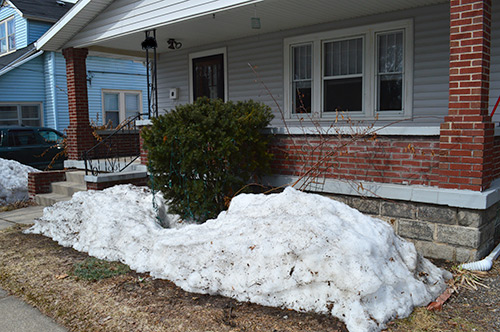
The monster rose (aka my Other Half’s nemesis) seems to have made it through as well.
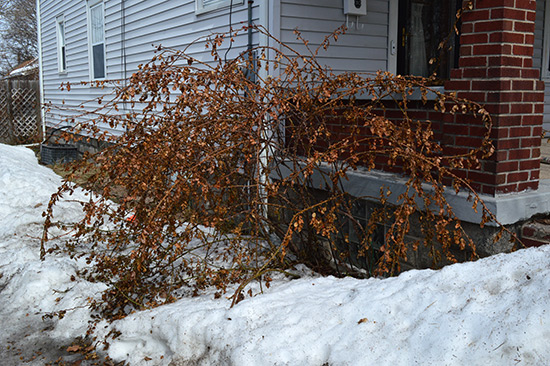
The East bed is quite a soggy mess along the pathway to the gate. Several new perennials (foxglove, toad lilly, barrenwort, and coreopsis) were just added during the past growing season.
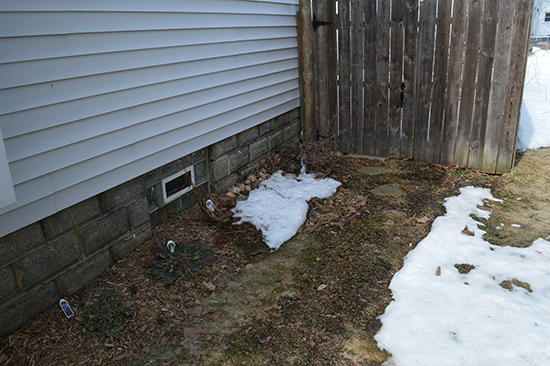
Here is the main garden area of the Lot. Many of the perennials are still insulated under a layer of snow. This did not stop me from pruning the spirea to the right of the garage door. Usually I would not prune a spring-blooming shrub at the end of winter for fear of trimming off all the flower buds. However, this one has been falling apart over the last few years and I plan to cut it all the way to the ground after it is done blooming this spring so it can restart new, healthier growth.
We often set our Christmas tree outside by the bird feeder after the holidays. It gives the birds another place to tuck themselves away from the winter weather while they eat.
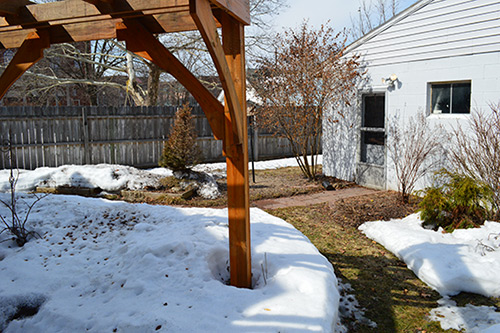
The middle shrub in front of the main garage wall is a burning bush. This species of shrub is too large for the space in which it was planted. When the snow retreats and the weather warms a bit more, I am going to attempt to thin out the branches a bit and bring the whole shrub back a bit in size.
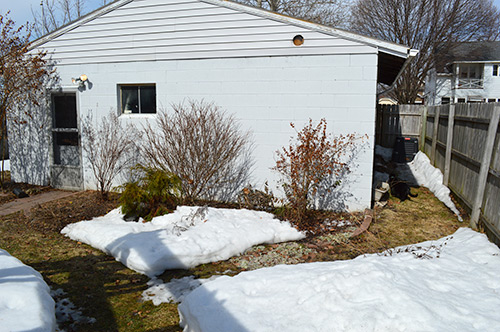
Once the snow melts more, I will be cleaning up and pruning back a lot of perennials left up for winter interest. That includes the maiden hair grass and bits of false indigo seen in the foreground peeking up from under the snow.
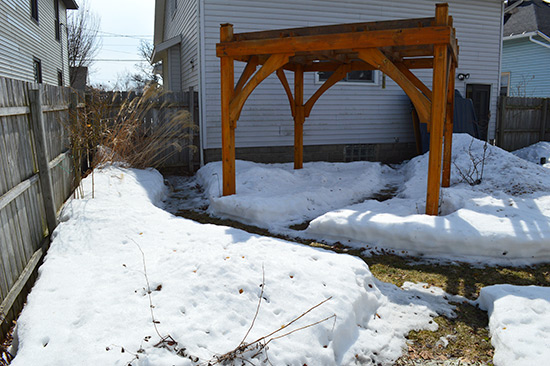
I looked back at pictures of the first day of spring from the past several growing seasons. In 2009 all the snow was gone and crocus and snowdrops were blooming. The same was true in 2010 with the daffodils swelling and many perennials stirring from winter. In 2011, there were still traces of snow in the areas of the back yard that were in the shade for the longer periods of the day. 2012 brought a very early spring with many trees already blooming which led to a horrible destruction of fruit crops for the state when a late freeze hit. Last year spring seemed back on track with the crocus and snowdrops appearing again and small areas of snow scattered here and there in the garden.
Deep down I know we will more than likely see snow again over the next month. In fact, it is in the forecast for later this week. However, there are chickadees moving through the backyard as they return from winter homes and the first snowdrops are emerging from the beds revealed by the withdrawing snow base.
#springiscoming